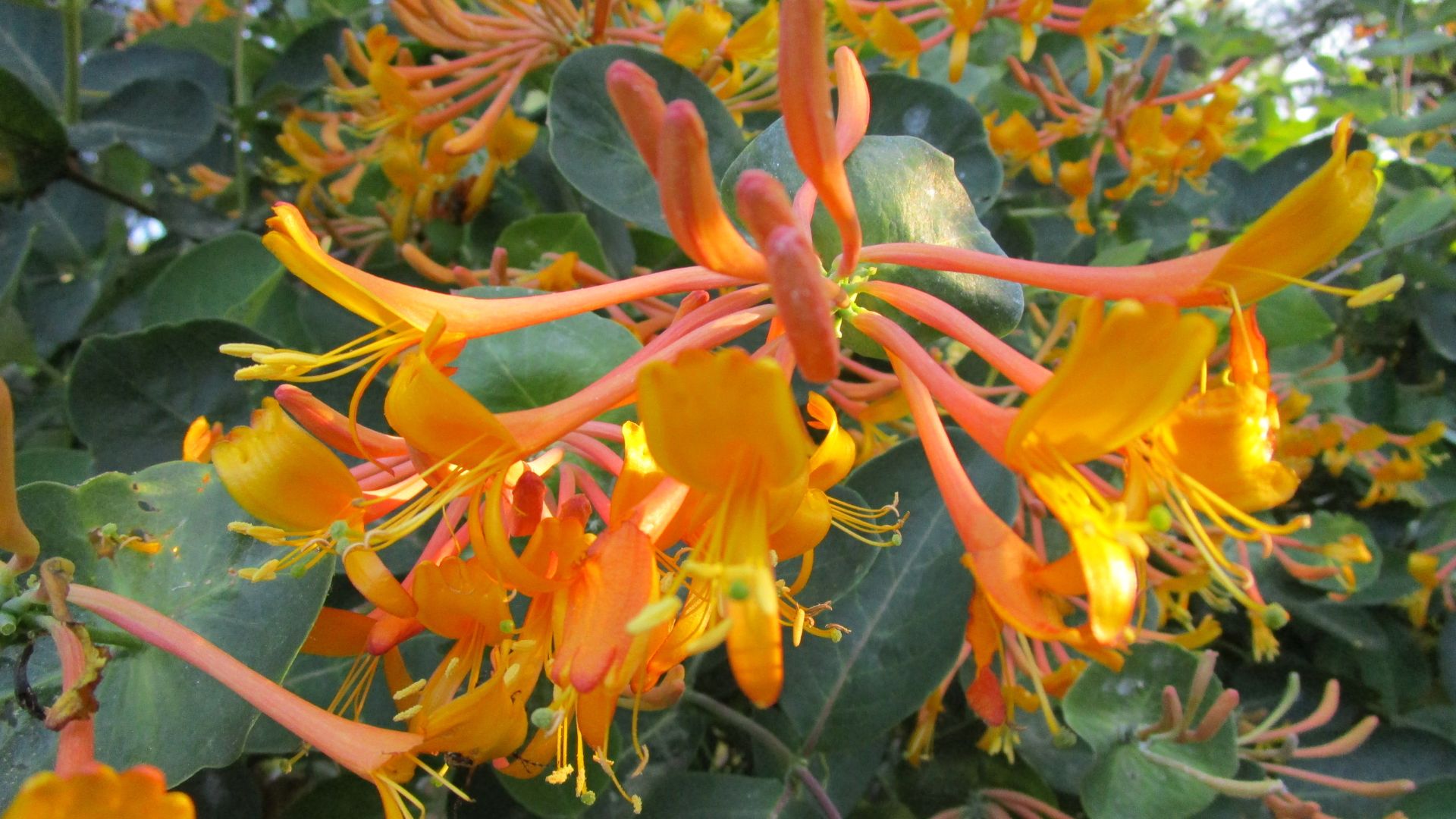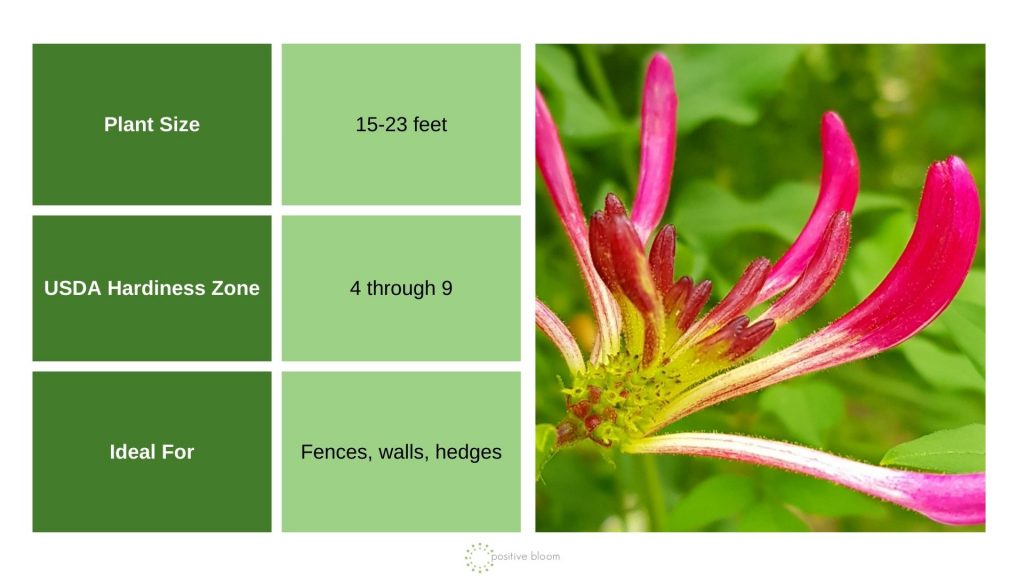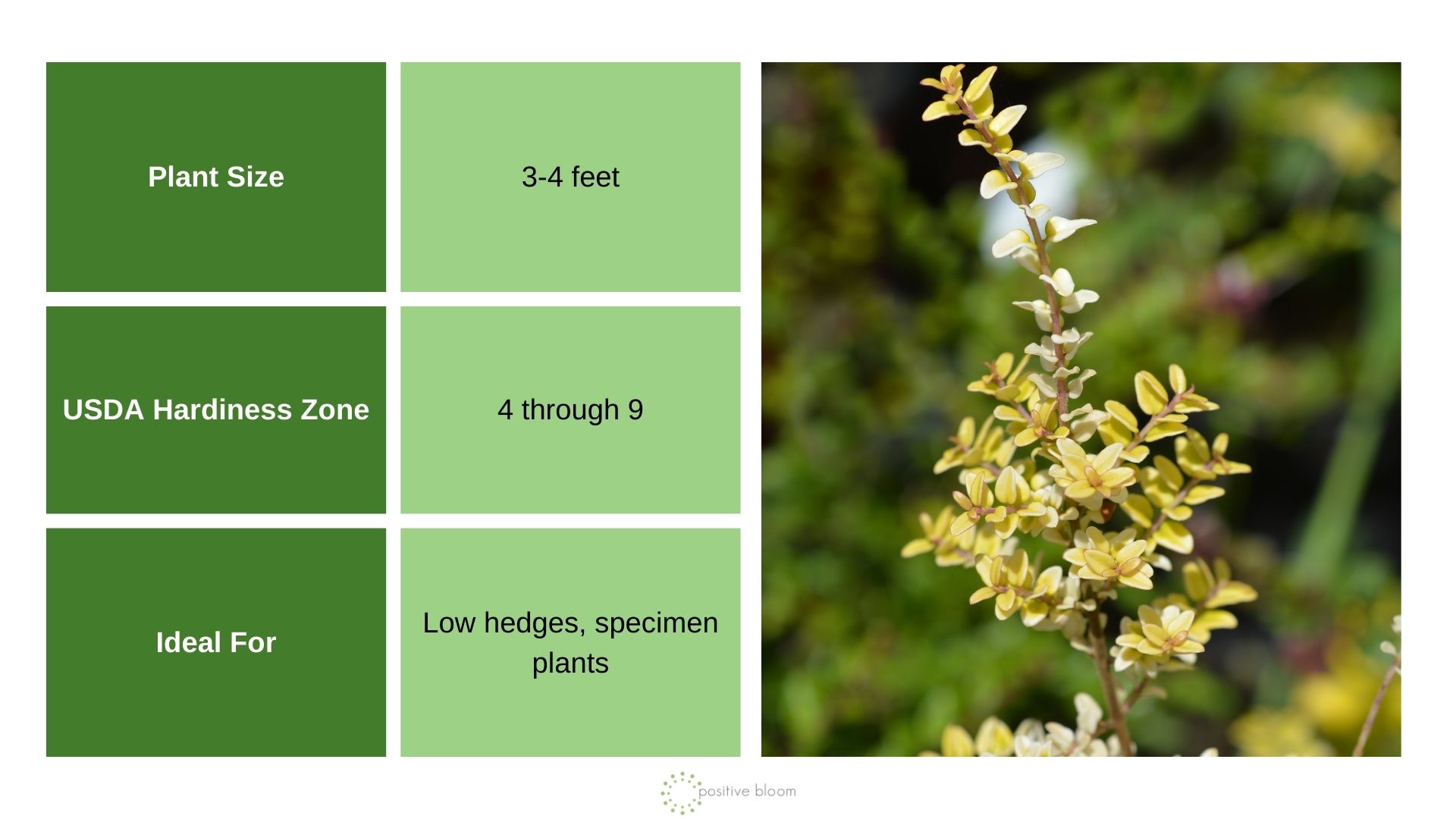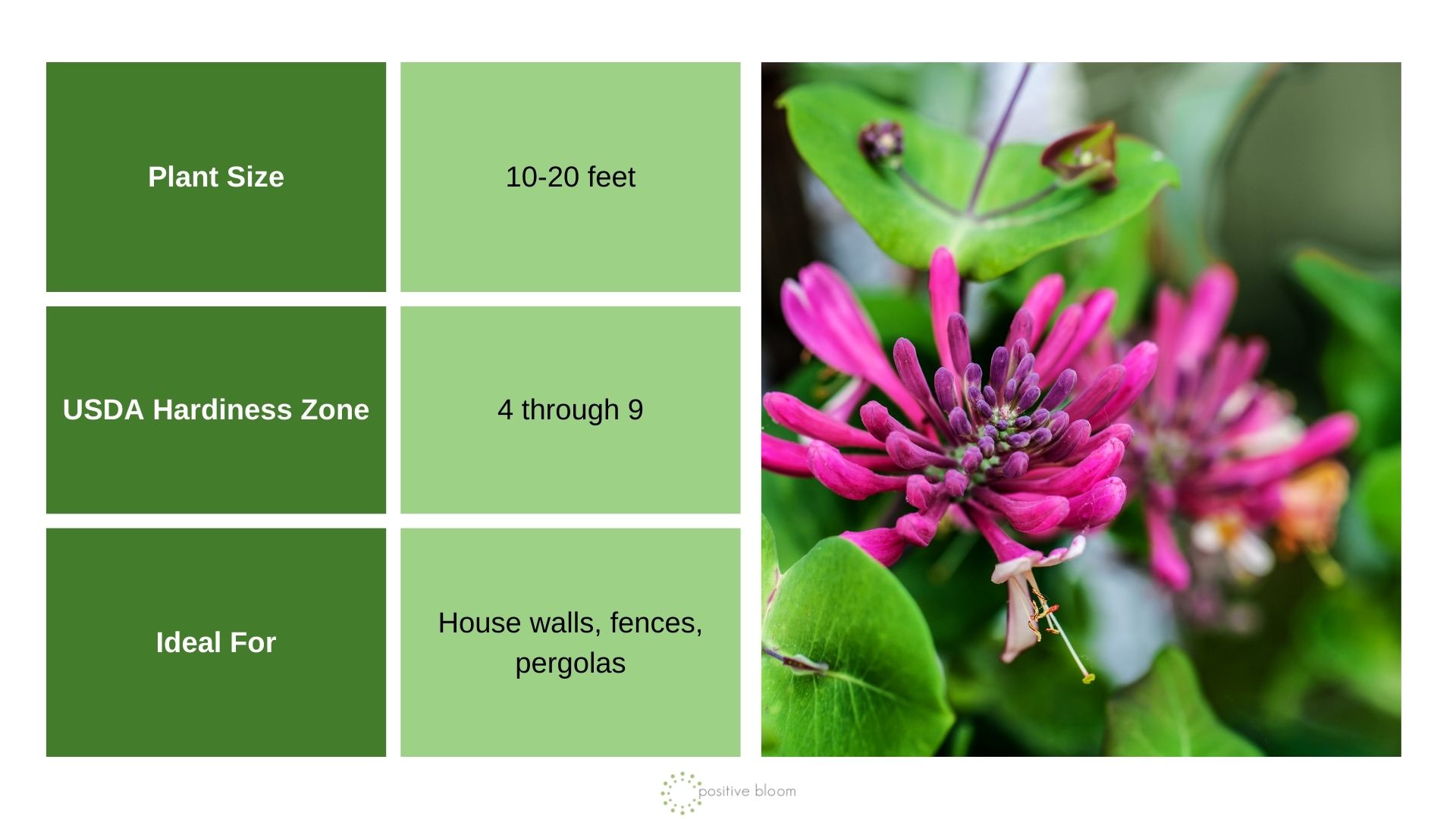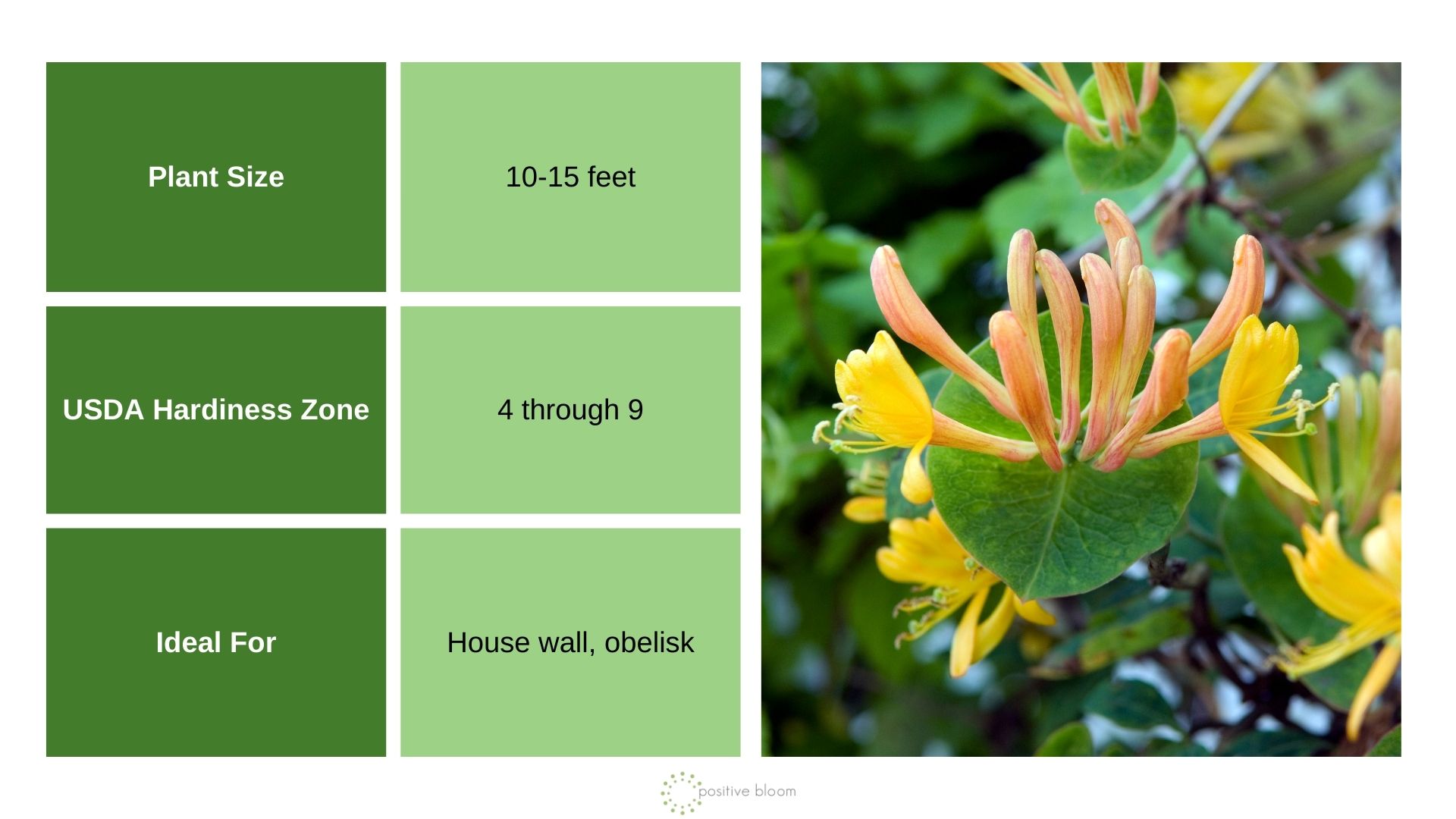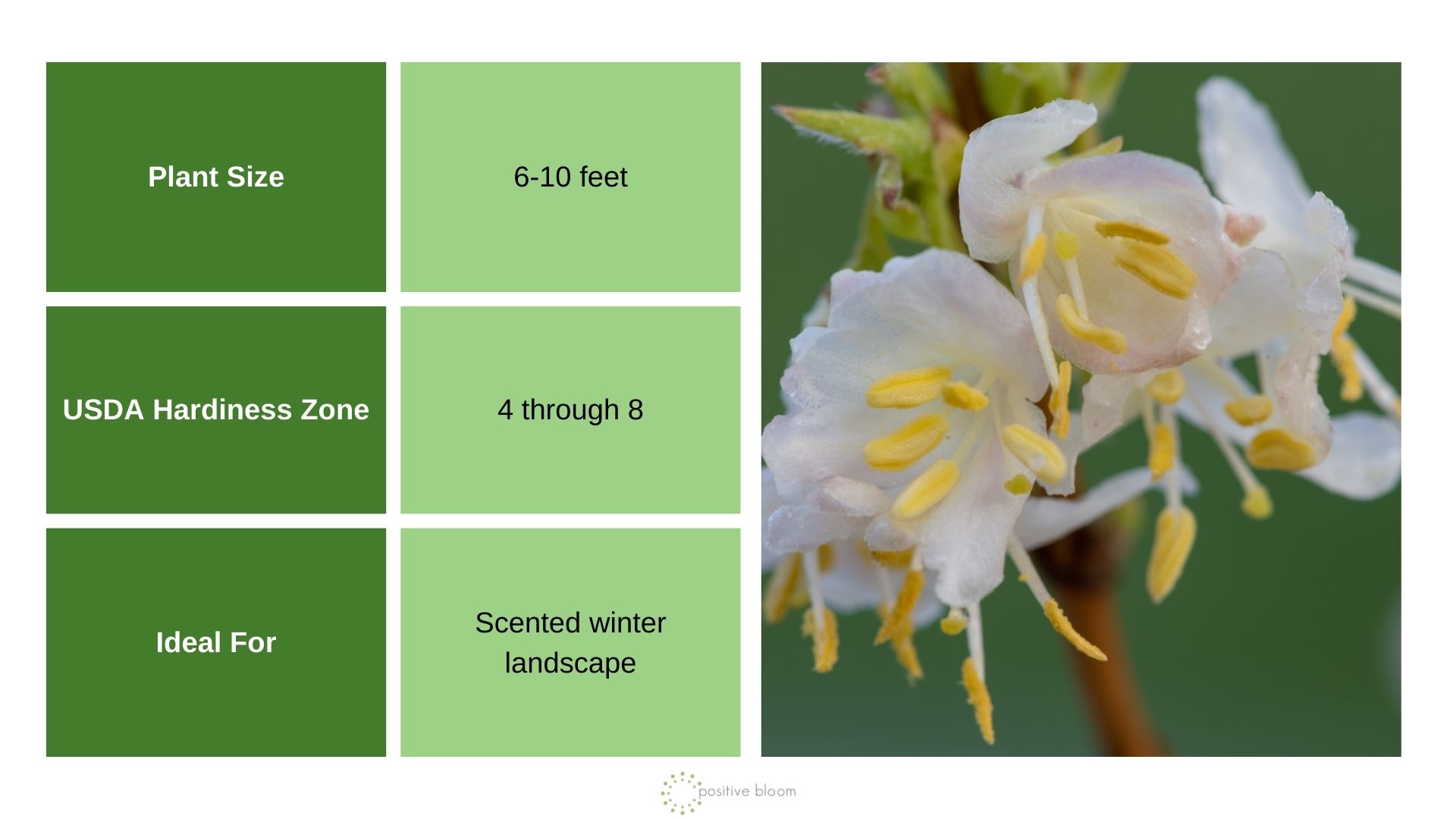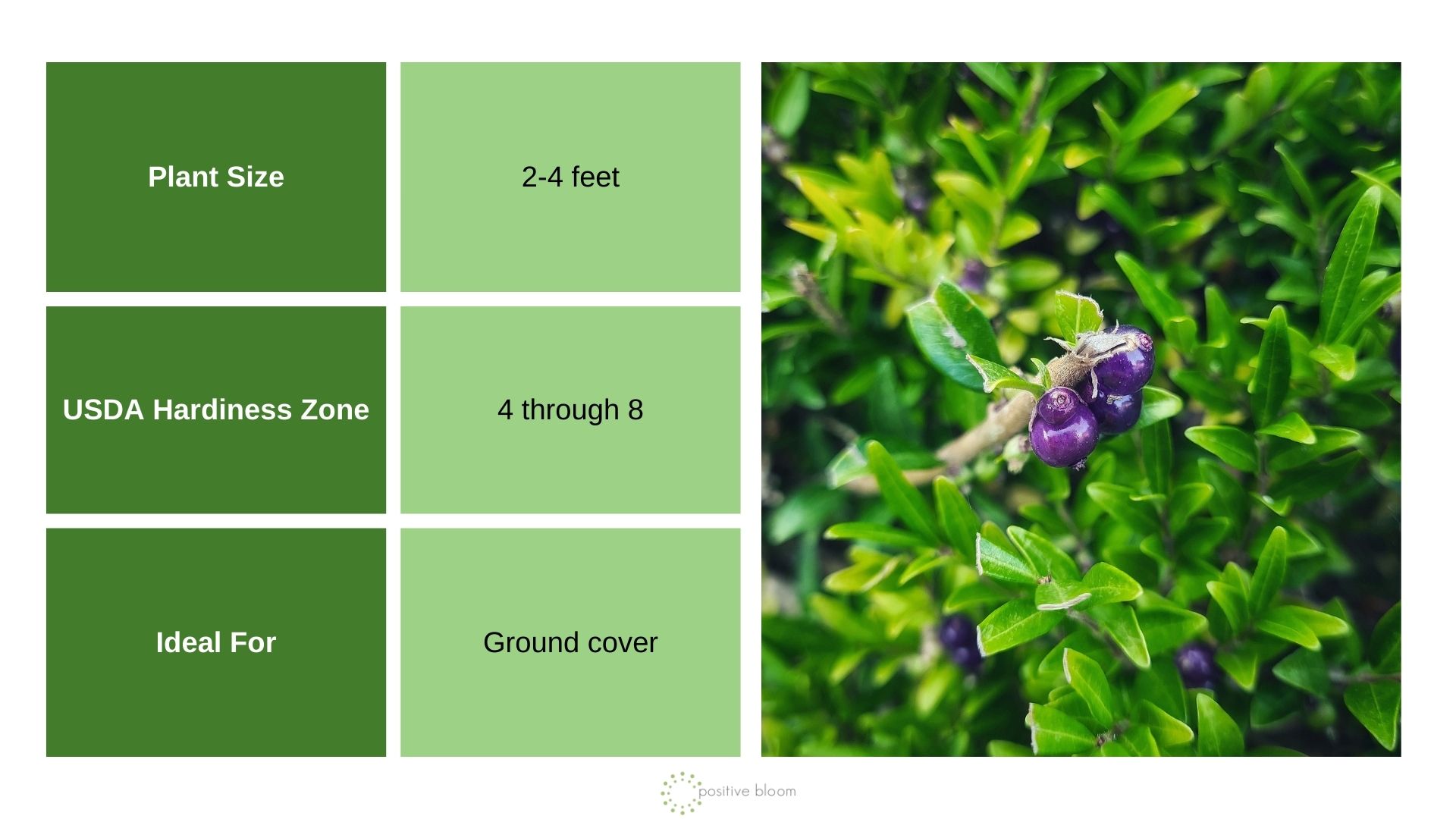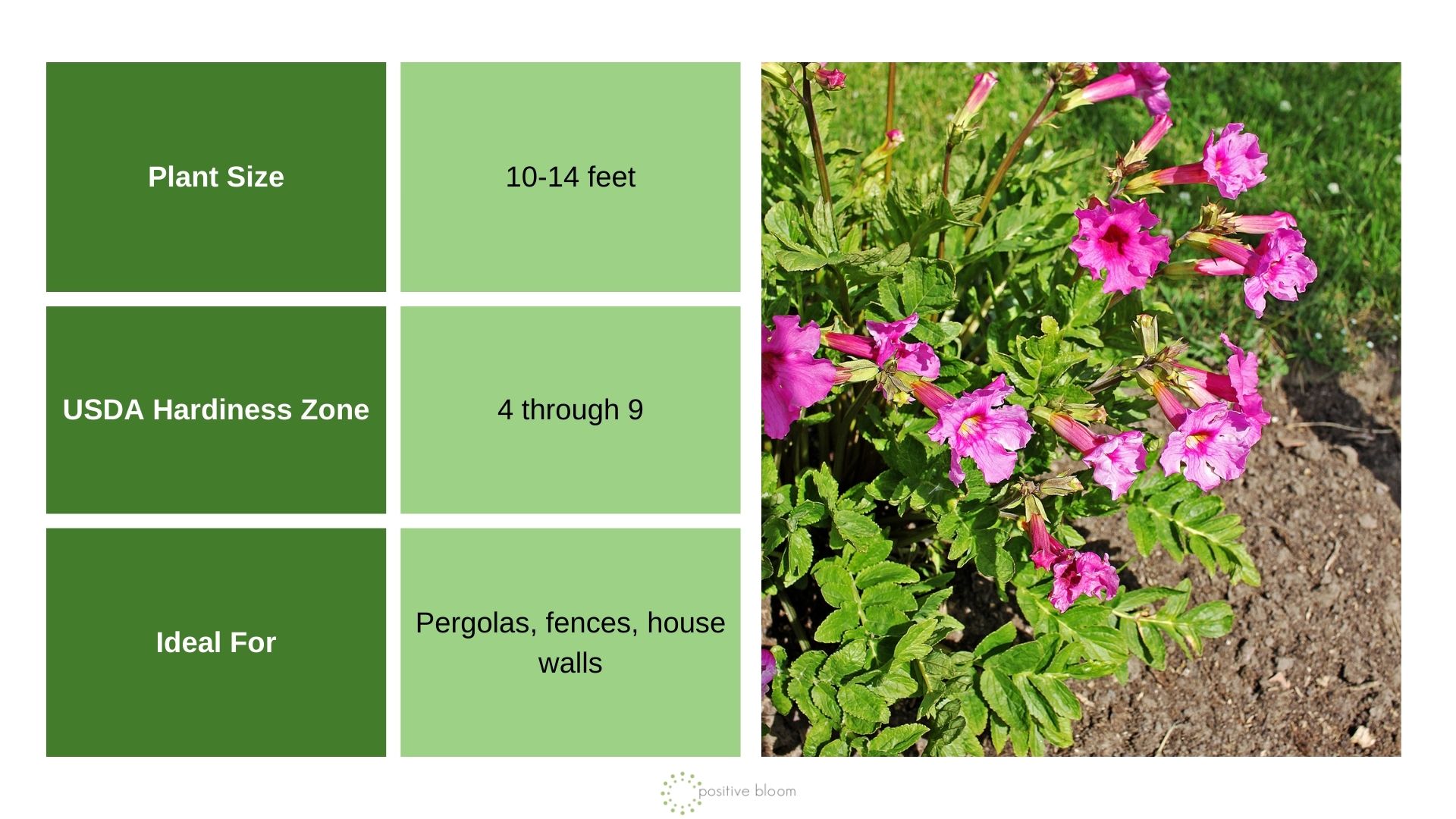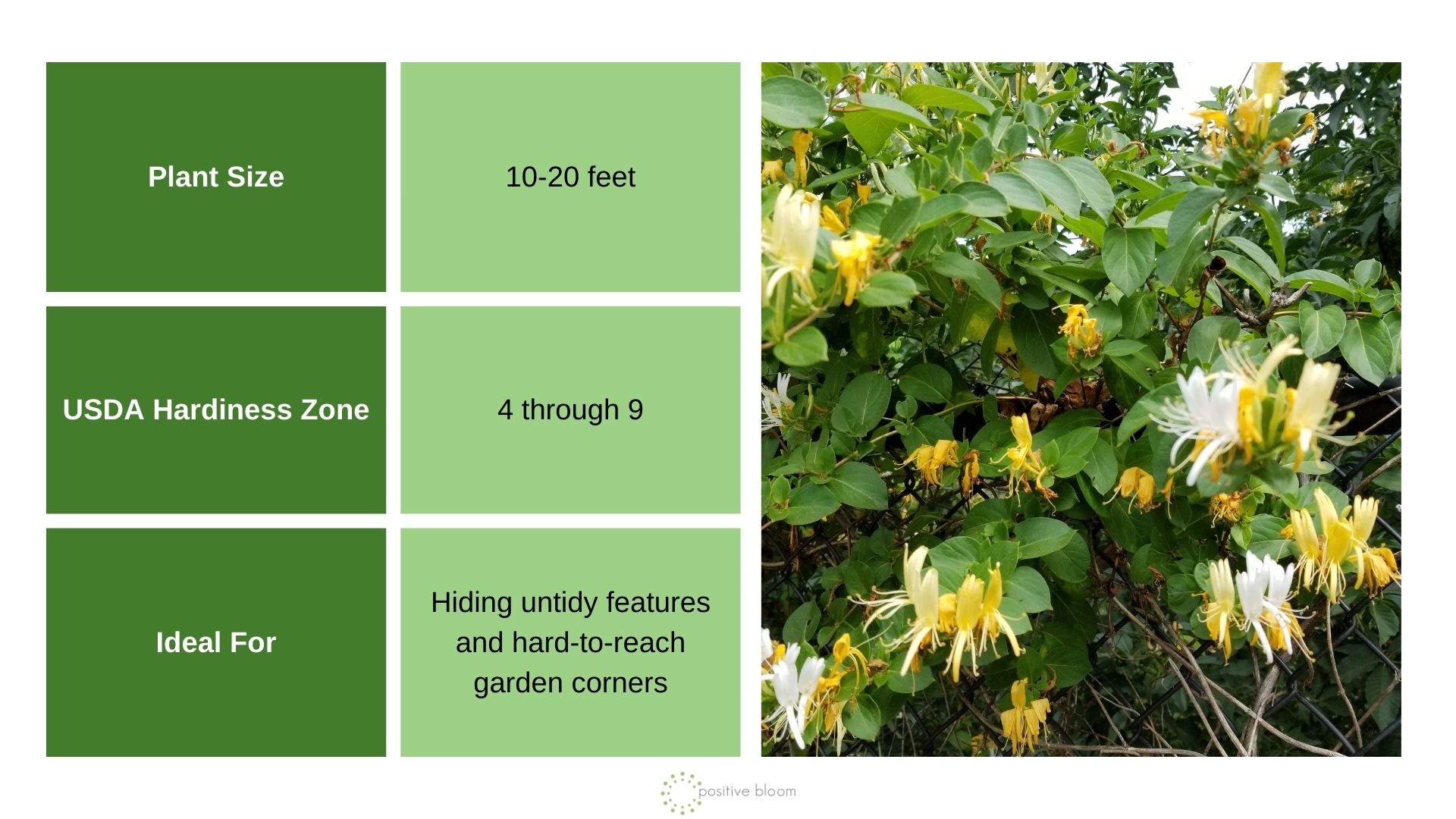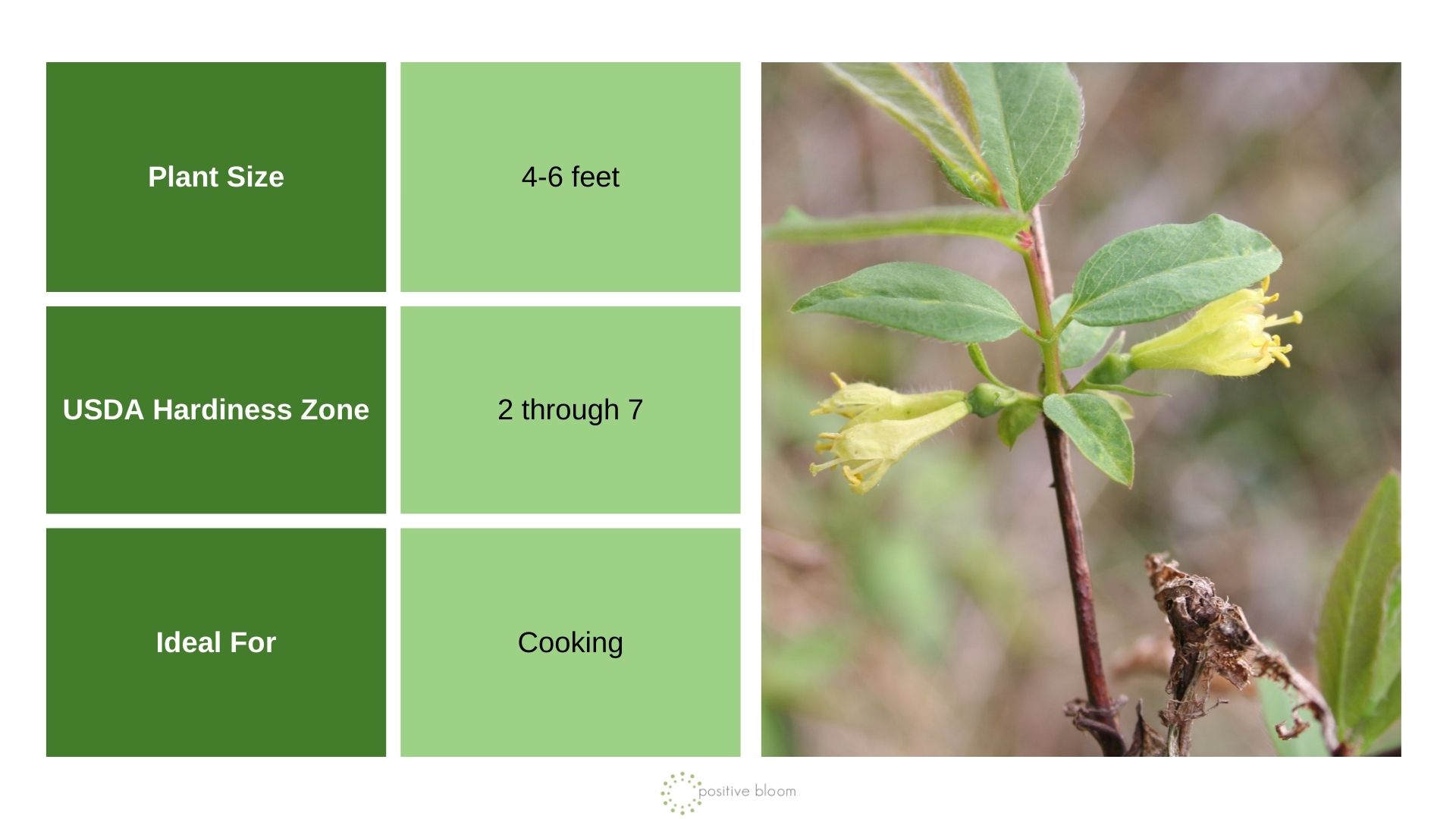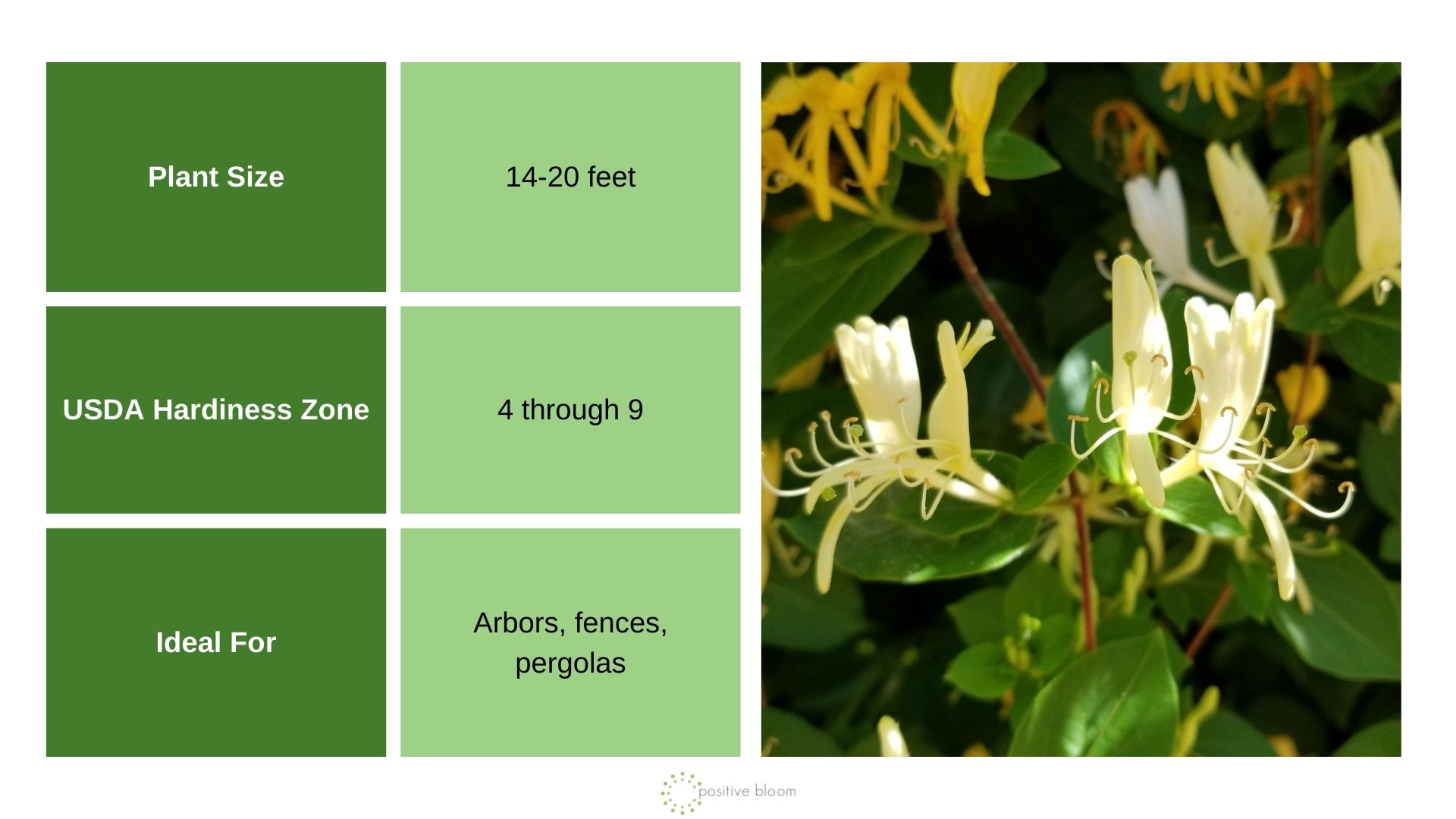The intoxicating fragrance of honeysuckles reminds me of summer and their captivating display in our yards and hedgerows.
These plant species are super easy to maintain and the majority of gardeners have climbing varieties in their gardens.
But did you know that there are some other varieties of honeysuckles that don’t have a climbing growth habit but develop into shrubs instead? These plants generate blossoms during the colder months and some are even grown for their edible berries.
In this article, I’ll show you some of the best honeysuckles that will enrich your yard with blossoms in winter and fill the air with a pleasant scent!
Let’s get started!
1. Lonicera Periclymenum ‘Serotina’
I’ll start my list with one of my favorite honeysuckle species, Serotina. This is actually a classic Dutch variety and is renowned for its pungent scent.
The blossoms are reddish-purple on the outside whereas the centers come in a creamy hue. They give rise to inedible, tiny red berries.
You can grow this variety near walls or edges to block the neighbor’s view. This plant responds well to pruning, so you can keep it smaller and add it to any spot in your garden.
2. Lonicera Ligustrina ‘Baggesen’s Gold’
If you have a smaller yard and none of the long climbing honeysuckles can fit, Baggesen’s Gold is the perfect variety for you.
This variety typically doesn’t exceed 4 feet and has a compact growth habit. For this reason, it’s commonly used in hedges but it can also make a perfect specimen plant.
Baggesen’s Gold has a fast growth rate and responds well to pruning. During the summer, its small and neat foliage will turn yellow.
3. Lonicera Periclymenum ‘Graham Thomas’
Graham Thomas honeysuckle is a robust plant and its strong scent is the main reason why gardeners love it so much.
The flower buds are creamy when they emerge and they gradually open to white.
This variety has low growing requirements and will generate an abundance of adorable blossoms with little effort.
You can plant it next to your house walls or fences and incorporate it in your cottage and informal garden style.
4. Lonicera X Heckrottii ‘Gold Flame’
Exquisite beauty and an enchanting fragrance make the Gold Flame honeysuckle stand out.
The spectacular tubular flowers emerge in pink and open to reveal a light orange-yellow hue. They combine great with oval bluish-green foliage and reddish stalks.
The Gold Flame is a prolific bloomer and its flowering season lasts from July through September.
You can use it to cover fences or house walls, or add it to pergolas and trellises.
5. Lonicera × Purpusii ‘Winter Beauty’
If you want your winter garden to smell fantastic and be adorned with blossoms, Winter Beauty honeysuckle is the ideal choice.
This deciduous shrub generates ovate leaves and small, scented white blossoms. The adorable blossoms develop into clusters and the shoots typically appear in January and February.
You can use the Winter Beauty variety for various styles; from cottage to coastal gardens.
6. Lonicera Ligustrina Var. Pileata
This variety is often referred to as box leaf honeysuckle and many gardeners use it as an alternative to common box.
Its most recognizable feature is the horizontal branches adorned with deep green foliage and sometimes translucent blue berries.
The blossoms are very fragrant and come in golden yellow and white. They’ll attract hummingbirds and butterflies so they aren’t only pretty but also very beneficial.
The horizontal branches make box leaf honeysuckle a perfect ground cover plant and will fit into many garden designs.
7. Lonicera Similis Var. Delavayi
Here’s another spectacular honeysuckle variety renowned for its interesting foliage, which has white hairy undersides.
The blossoms are scented and white but turn yellow as the season progresses. The flowering stalks are pretty long, which adds more beauty to the plant.
The flowers give rise to black berries but they’re inedible and should serve only for ornamental purposes.
This semi-evergreen plant looks amazing if added to wall side borders and fits in best in coastal garden design.
8. Lonicera Japonica ‘Aureoreticulata’
If you need a plant where other common plants won’t grow, Aureoreticulata honeysuckle is a perfect choice.
This is a vigorous semi-evergreen and what makes it special are the golden veins on the foliage. They combine perfectly with white blossoms that turn yellow later in the season.
The fragrance of Aureoreticulata will make your winter evenings very pleasant.
There’s one thing you should be careful about when it comes to japonica honeysuckles. They’re considered invasive in many US regions (1) so you should check before planting them.
However, if you’re skilled at pruning, then you won’t need to worry much because this plant can withstand heavy pruning.
9. Lonicera Caerulea
Here comes one plant that many do not link to honeysuckles. Lonicera caerulea, otherwise known as the honeyberry, belongs to the honeysuckle family.
Just like many other varieties, this honeysuckle generates berries, but the difference is that these are edible. They’re super healthy and packed with even more vitamin C than other common berries. (2)
The blue fruits have an almost rectangular shape which adds more beauty to the plant.
The blossoms of this deciduous shrub typically occur in winter. The honeyberry plant is one of the easiest plants to grow; it’s hardy and shows excellent resistance to pests and diseases.
10. Lonicera ‘Mandarin’
If your garden lacks visual interest, you should grow the Mandarin honeysuckle. The juvenile leaves come in coppery hues and they turn to deep glossy green as the season progresses.
The plant generates numerous blossoms that come in reddish-orange and they appear in June and last through September.
Unlike some of its cousins, Mandarin honeysuckle isn’t invasive so you don’t have to worry that it will take over your yard.
Do You Need To Prune Your Honeysuckles?
A frequent question I get on honeysuckles is whether they need pruning. Well, the answer is both yes and no. For instance, if you have a large yard you can simply let the twining shoots climb to adult shrubs.
On the other hand, if you don’t want your honeysuckle to grow too long, feel free to prune it.
If you grow the Periclymenum varieties, you can prune them by selecting two older branches and trimming them down on the plant. You should know that the tricky part is to unte the trimmed vines.
Similis honeysuckle varieties generate blossoms later in the season so you can cut them down in spring.
If you grow vining varieties, you can heavily prune them in spring and thin what’s left after pruning.
That’s it! Now you know some of the best honeysuckles and I’m sure (at least) one will be added to your to-grow list!
References
1. Japanese Honeysuckle (Lonicera japonica). (n.d.).
2. Gołba, M., Sokół-Łętowska, A., & Kucharska, A. Z. (2020). Health Properties and Composition of Honeysuckle Berry Lonicera caerulea L. An Update on Recent Studies. Molecules.

